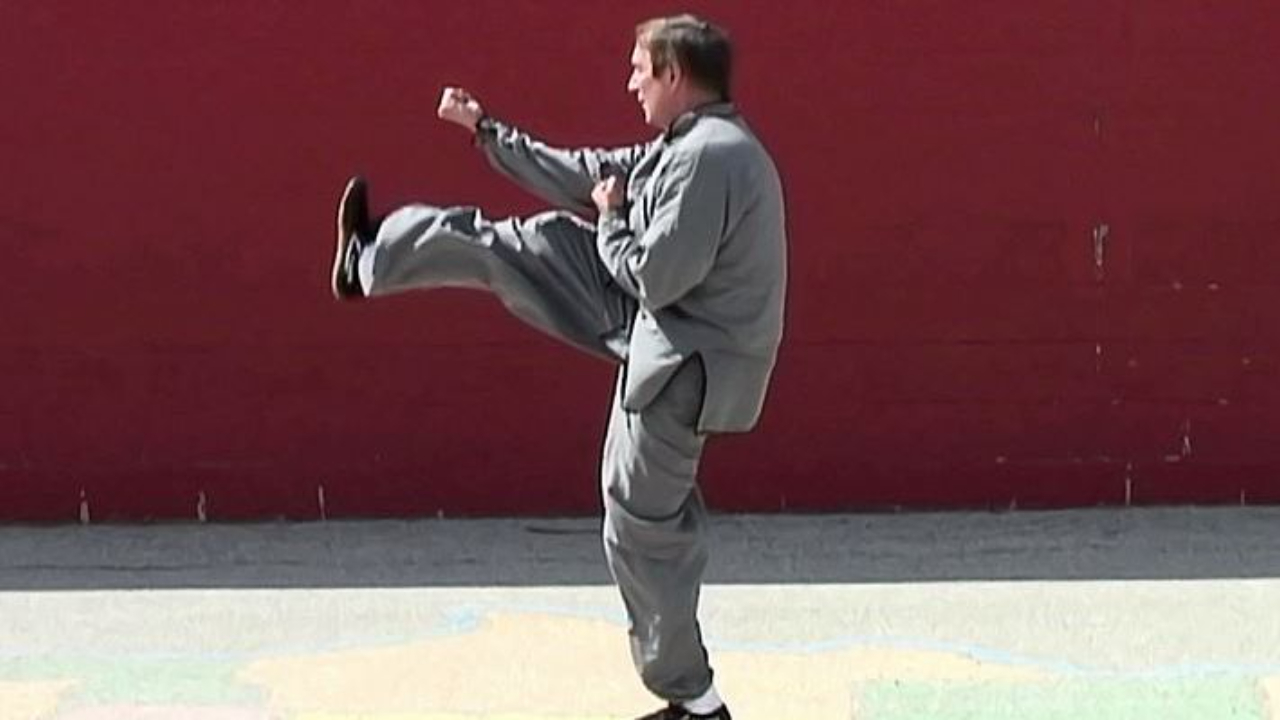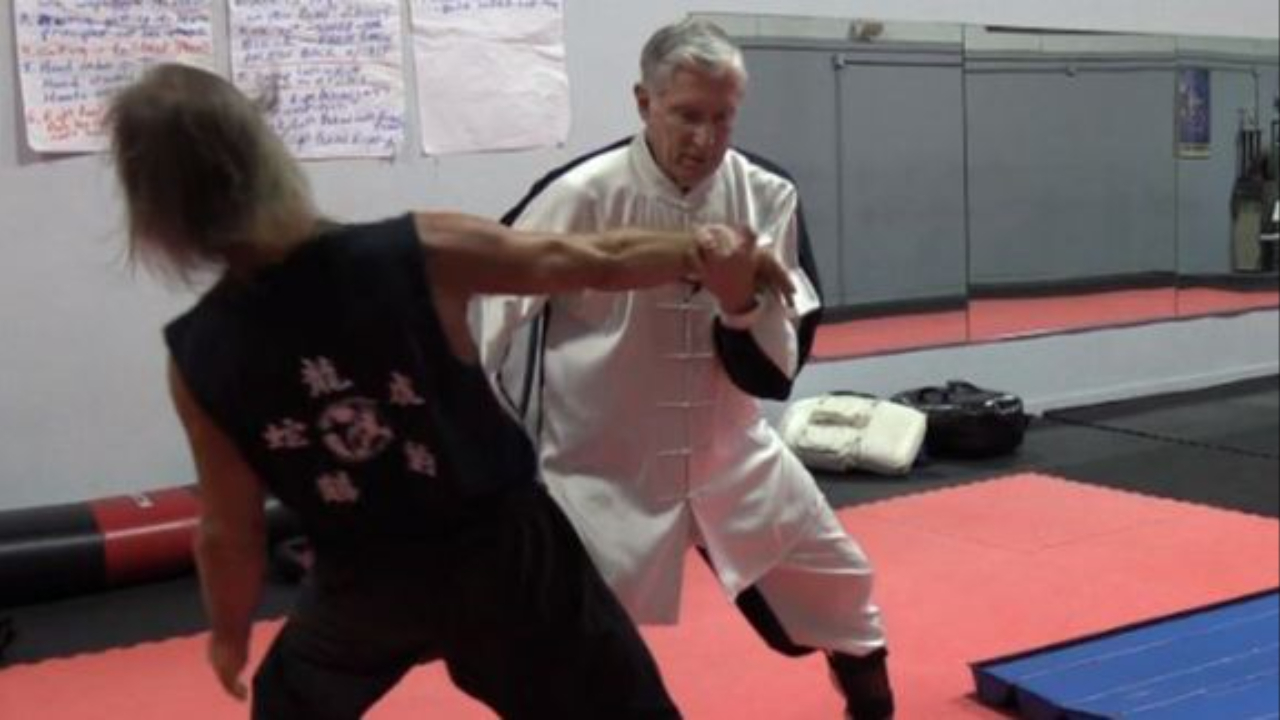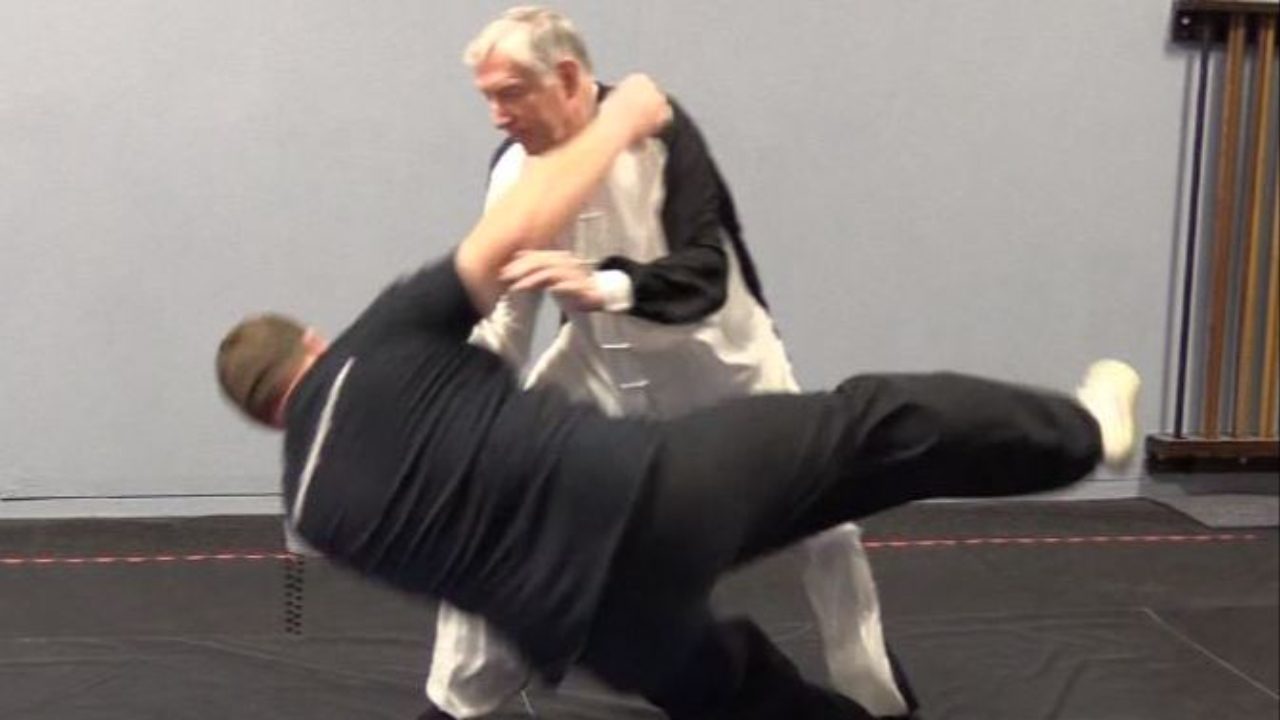William C.C. Chen's Daughter Says I Am Arrogant Over a Book Review

William C.C. Chen's daughter Tiffany called me arrogant the other day. She also mentioned "gossip," and implied that I do not understand what I was reading.
At first, I couldn't believe it. Then, I thought it was funny. But the more I thought about it, the more bizarre and creepy it became.
Here is what happened.
I pulled a book from my martial arts library this weekend: "Body Mechanics of Tai Chi Chuan," by William C.C. Chen.
Since body mechanics is something I am very interested in, and somewhat knowledgeable about, I wanted to read his take on it.
I respect all teachers, unless they claim supernatural powers. I have always heard very good things about William C.C. Chen. His name is among the most famous of American tai chi teachers. You have to admire someone who has done so much to spread tai chi in America.
On the back of the book, he writes, "My book.....deals with the human body under the action of given forces and is based on practical physics such as body leverage and t...
Do You Understand the Body Method - "Shen Fa" of Your Martial Art?

What does the term “body method” mean when it comes to Xingyiquan, Taijiquan and Baguazhang? The Chinese term for body method is “Shen Fa.”
Putting it simply, body method is the way you train your body to move in practicing an art so you achieve the result of moving in this same way when you do self-defense. It involves structure, body mechanics, and concepts for receiving and discharging force.
Each art has distinct ways of training, but I have broken some of the key body mechanics down, and I teach those body mechanics as a way to begin developing the body method for effective internal arts.
The six key body mechanics include:
- Establishing and maintaining the ground path at all times.
- Maintaining peng jin at all times.
- Using whole-body movement.
- Silk-reeling energy connected through the entire body.
- Dan T’ien rotation.
- Opening and closing the kua.
When you develop these six body mechanics as you train the various exercises, forms and fighting concepts of the internal...
Dropping Power - Generating Power Over a Short Distance

Have you ever heard of the "Teacher Test" in Taiji? When you meet a Taiji instructor, ask if they can do the Teacher Test.
Most often, they will stare at you with a blank expression, but if they actually know what you are asking, and demonstrate the Teacher Test, you have found a good teacher and you should sign up for instruction.
The Teacher Test was demonstrated to me by my first Chen Taiji instructor, Jim Criscimagna, the day I met him in early 1998. I had been in martial arts for 25 years at that point, and I had read about the Teacher Test in an online forum but had never seen it. When I asked Jim about it, he asked me to stand next to him and put my hand on his shoulder.
"Now, without cocking your arm and shoulder -- without using local arm and shoulder muscle -- and without changing your stance -- knock me off balance," he said.
I was paralyzed...
20 Years of Tai Chi and No Body Mechanics

I have a good friend who found me online and called me up. We talked for a few minutes and decided to meet in a park and compare notes.
"I've studied and taught Tai Chi for 20 years," he said. I was impressed and thought that perhaps I could learn from him, too.
We met and talked for a few minutes, and the subject of silk-reeling energy came up. He said he had been taught silk-reeling and practiced it.
I asked him to show me. He stood up and did a silk-reeling exercise. His hips swung wildly and there wasn't much connection.
I was raised in the South, where we try to be polite. I didn't say much, but began showing one of the silk-reeling exercises I learned from Jim and Angela Criscimagna and some members of the Chen family, including Chen Xiaowang.
My new friend tried again and again, the connection wasn't there through the body. There was too much obvious arm movement and no whole-body power.
I asked him if he ever practiced fighting applications, and showed him the Chen moveme...
How to Use Intent in Tai Chi, Hsing-I and Bagua

I received an interesting email from a member of the online internal arts school last week asking what does it mean to use intent in Taiji. Like a lot of members, he's using the online material to supplement training under another teacher. It became apparent that an instructor had made intent appear mystical.
He asked if, when establishing the ground path, if it's physical or if you are using Mind Intent?
After giving him my take on the subject, I then did some research to see what other instructors say. As I expected, the term Intent is shrouded in abstract terms and descriptions, in Taoism and Buddhism. One well-known "master" writes about it in such an abstract way that you'd need a Ph.D in Philosophy to understand it, then he asks for nearly a hundred bucks.
Let me put it simply -- the question is "what is intent when doing any internal movement?"
You can make it as flowery and abstract as you want, but the bottom line is this: the intent of the movement depends upon the marti...
Butt Out -- What it Means to "Tuck the Tailbone" in Taijiquan

In the practice of the internal arts, you're supposed to relax the hips. Sometimes it is said that you should "tuck the tailbone."
I prefer to use a different description.
Relax the lower back.
Here are two photos. The first one shows a common posture that I see in beginning students -- the butt sticks out in postures such as Single Whip.The second photo shows a more "centered" tailbone. The lower back is relaxed.
When most of us stand up, our lower backs are tense. They are concave, bowing inward toward the navel. But when you work on the body mechanics that are essential for quality internal arts (Taiji, Xingyi and Bagua) you learn to relax the lower back.
When I teach this, I have students put a hand firmly on my lower back. I stand normally. They can feel it bow inward. Then I relax and the lower back "fills up." At the same time, the hips drop down and inward. By relaxing the lower back, you are "tucking the hips," and no tension is required.
Relaxing the lower back is ...
The Core of Tai Chi - Body Mechanics and "Energies"

I spent the morning yesterday studying the energies and directions of Tai Chi. I have had some good teachers who have touched on these topics in class, but they've never really been organized in a way that brings it all together in a systematic approach to learning.
After a few hours of study and reflection, and getting up to practice some movements for even more insight into the physical mechanics, I had crystallized my thoughts -- and some outstanding information -- into five pages of a document that I'll put on the online school tomorrow, along with a video that I plan to shoot this evening with my students, demonstrating each of the 13 energies and the five moving directions of Tai Chi.
There are six main physical skills you need for good Tai Chi (and Hsing-I and Bagua). Along with the 13 energies and five moving directions, this makes up the core of an amazing martial art.
The Six Main Physical Skills:
1. Establish and maintain the ground path
2. Maintain peng jin at all tim...
Borrowing Energy in Push Hands and Self-Defense

Jieh Jin is translated from Chinese as "borrowing energy." It's one of the many concepts that are abstractly described as "energies" in the internal arts.
As with each of these "energies," borrowing energy doesn't mean you're sucking the energy out of your opponent literally -- it isn't mystical, it's physical just like all the other skills of Tai Chi, Hsing-I and Bagua.
These three photos show an exercise you can do to practice and demonstrate borrowing energy.
In photo 1, my partner is rushing at me to push me off my ground. He will push hard into my folded arms, using his momentum and weight. I'm establishing the ground path, maintaining peng, and setting up the body structure that I need for good internal mechanics.
In photo 2, he makes contact with his force, or energy. I ground it and give it no place to go but back at him. It actually feels as if it bounces back at him.
In photo 3, you can see him bouncing back slightly. All of the internal mechanics are coming into ...
A Key Goal of Baguazhang - Use the Body to Uproot the Opponent

Besides capturing and controlling your opponent's center, one of the key goals of Baguazhang is to get close to the opponent and use your body to uproot them -- unbalance them -- and put them down.
As in each of the internal arts (and kung-fu in general), there are many ways of doing this that are hidden inside techniques.
The circular and flowing forms that you see provide you with a way of practicing the body mechanics you need to practice these techniques with a partner and later, use them in a self-defense situation.
Photo 1 shows the end of the opening movement to the Cheng-style "Eight Main Palms" form. It's similar in energy to the opening of a Tai Chi or Hsing-I form -- downward energy. One obvious application is a downward block/deflection of an incoming punch.
Photo 2 shows the next move, a step-out with the left foot as both hands shoot out along the centerline with palms up. Some people may see this as simply a way to begin walking the circle in the dragon posture...
Getting Back to the Basics of Internal Strength

Last night at practice, some students and I went over basic ground strength exercises from the Internal Strength DVD. These are among the first things that my students learn, both in my classes and in the online school.
It was good to revisit these exercises. If you're doing the internal arts such as Tai Chi, Bagua, or Hsing-I, and you haven't been taught how to establish and maintain the ground path and peng jin throughout all of your movements--even while walking--then you're not really doing the internal arts, you're just moving in a way that looks like the internal arts. Unfortunately, most of the tai chi folks I meet around the country are just moving around. When you push on them they collapse. It's easy to see that there is no peng, no ground, no silk-reeling going on in their movement.
The development of internal strength gives you the iron inside the cotton, but it takes practice and someone to show you how it's done.
In the photos here, I show one of the exercises that we ...
